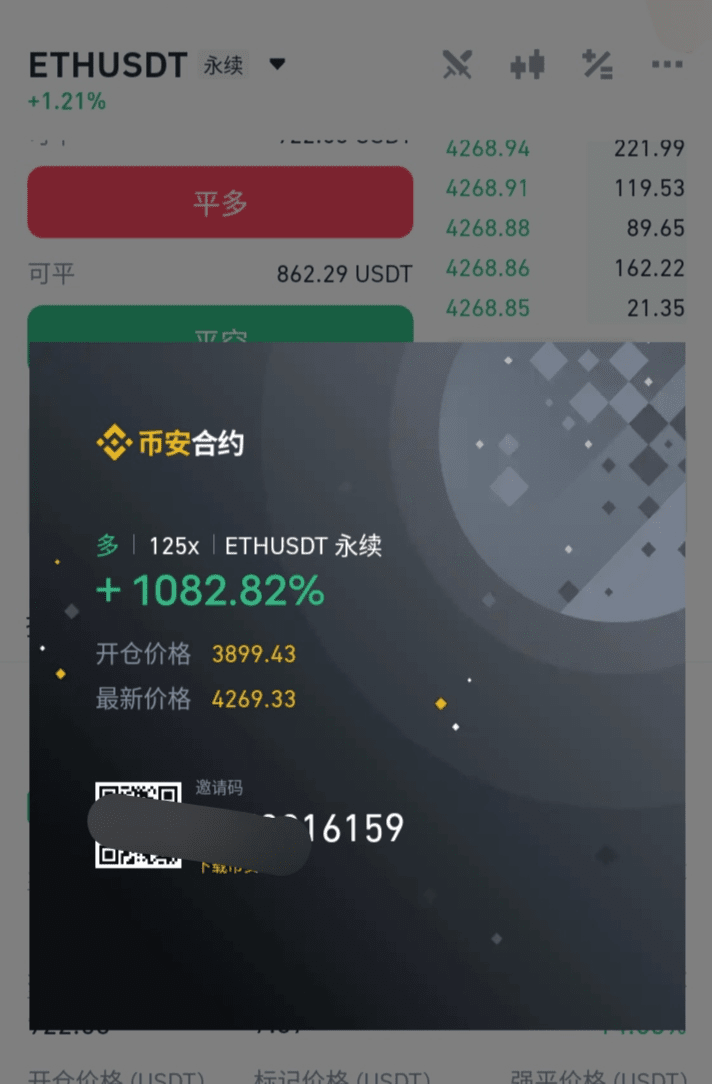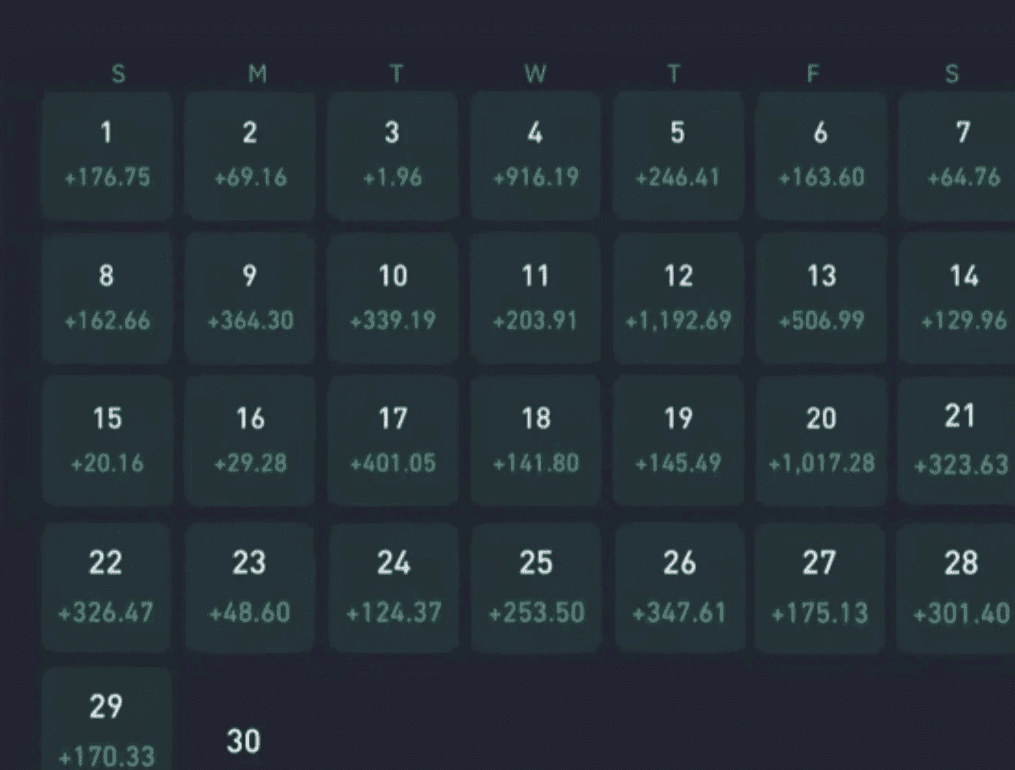Fellow crypto enthusiasts, today I won't talk about contract leverage, won't hype up 100x altcoins, and certainly won't draw up a big picture of 'the next Bitcoin'—I want to share something particularly 'simple':
In the past two years, I've guided over 300 fans, 90% of whom used this method to go from 'small losses to big gains', with the most intense going from 800U to 3.6WU; the remaining 10% who didn't profit either found it 'too slow' midway and changed to chasing highs or couldn't resist the urge and over-leveraged.
You might laugh: 'Trading coins and talking about 'simple'? Earning quick money is stimulating!' But first, ask yourself with a clear conscience:
After chasing highs and lows for half a year, is your account balance thinner than a freshly made dumpling skin?
Staring at the screen late at night, is it always a back-and-forth between 'wait a bit longer' and 'cut losses'?
Clearly studied 108 types of technical indicators, yet when the K-line turns red, all indicators are rendered useless, and your mindset collapses first?
The most heartbreaking truth in the crypto world: what you think is 'smart' is 99% a pitfall; and the real 'foolishness' is the 'wealth code' that only a few can acquire.
How 'simple' is the 'simple method' I'm talking about?
Last year, I had a small fan named Akai, with a capital of 800U (less than 5000 yuan), a typical 'crypto novice'—previously following the 'teachers' in the group to trade contracts, exploding positions 2 times in 3 days, finally biting the bullet and saying: 'I refuse to believe that small capital can’t turn around!'
I told him: 'Don't be vague, just remember these 3 'simple rules', strictly follow them, and thank me in 3 months.'
Rule 1: 'Diversify your funds' like saving, always only use 30% of the money to trade.
800U, first deduct 500U as 'dead period savings'—unmovable, even if it’s lost, it won’t be replenished. The remaining 300U is then split into 3 parts, each 100U.
Remember: you only ever have 100U 'in battle', the other 200U is your 'reserve team', and 100U is for 'retirement'.
Rule 2: Only pick 'certain opportunities', refuse to 'gamble on probabilities'.
Don't believe in phrases like 'a pullback is a buying point' or 'a big bullish line indicates a rise'—these phrases are as useless as 'it might rain tomorrow'.
I only let Akai do one thing: wait for the K-line to 'break through' the 7-day moving average, followed by 3 consecutive bearish lines, and on the 4th day, collect a 'long lower shadow' (like a nail driven into the ground), then act.
'Why choose this? Because this is the market saying 'I've dropped enough', which is more accurate than looking at 100 indicators.'
Rule 3: Run when you earn 10%, cut losses when you lose 5%, execute like a robot.
The first time Akai made a trade, he bought a certain altcoin for 100U, sold it at a 10% increase (110U). The next day, that coin rose another 20%, and he was anxious, slapping his thigh: 'If I had known, I would have held on longer!'
I didn't comfort him, but instead said: 'You earned 10%, you've already beaten 90% of people—those greedy ones who aim for 30% often end up giving it back.'
Later he understood: earning is about 'steady happiness', not 'the thrill of gambling'.
Three months later, his account grew from 800U to 3.6WU.
Akai strictly followed these 3 'simple rules':
Month 1: Only made 4 trades, 2 wins and 2 losses, but total capital grew from 800U to 1200U;
Month 2: Seized upon 2 rebounds after major corrections, increased position with 'reserve funds', capital rose to 2500U;
Month 3: The market entered a small bull run, and he relied on 'rolling funds' (continuing to invest proportionally the profits), directly achieving 3.6WU.
Now he tells everyone: 'I used to think the 'simple method' was slow, now I understand—slow is the fastest route.'
Why does the 'simple method' have almost 100% profitability?
Because it specifically treats the three major 'terminal illnesses' of the crypto world:
1. Cure 'impulsiveness': only take certain opportunities, refuse to 'gamble on the market'.
There are 100 'opportunities' in the crypto world every day, but 90% are traps. You only need to wait for that 10% of 'certain opportunities'—like key support levels, volume breakthroughs, emotional reversals; these signals may be few, but the win rate can exceed 80%.
2. Cure 'greed': run when you earn 10%, cut losses when you lose 5%.
The biggest trap in the crypto world is not losing; it's 'wanting to earn more when gaining a little, and wanting to recover losses when losing a little'. You earn 10% and run, which is equivalent to 'putting profits in your pocket'; losing 5% and cutting is equivalent to 'stopping losses in time, without competing with the market'.
3. Cure 'gambling nature': diversify and control positions, always leave a 'back door'.
You only ever use 30% of your money to trade; even if you lose it all, it won't hurt too much. The remaining funds can withstand a bear market and have 'bullets to pick up bargains' during a bull market—this is the core of small investors turning their fortunes around.
Finally, let me say something heartfelt.
The crypto world lacks 'rich legends', but lacks 'stable earners'.
Those who teach you to 'all in on 100x coins' or 'make 10 times in one night' are either not making money themselves or want to profit from your tuition.
The real 'secret to making money' has never been complicated—wait for the right moment like farming, manage your funds like saving, and follow the rules like a robot.
If you are also a small investor and want to transform from 'being slaughtered' to 'stably profiting', remember these 3 'simple rules':
Only use 30% of your money to trade, leaving enough for 'retirement';
Only take 'certain opportunities', refuse to gamble on probabilities;
Earn 10% and run, lose 5% and cut, execute like a machine.
Finally, let me ask you: would you prefer to earn steady money with 'simple methods' or continue to be a 'victim' using 'smart methods'?
Remember: the most ruthless 'dimensionality reduction attack' in the crypto world has never been some high-level skill—but rather, achieving simplicity to the extreme.
Some people rolled from 200U to 3WU, while others directly reversed a losing life.
Let's be honest: you don't lack capital; what you lack is the right way to play. I've figured out this 'madness within stability' of rolling funds, but it's not suitable for the timid or the greedy—only for those who want to turn their fortunes around in the crypto world. Don't ask how to read the market, don't ask how to buy coins.
